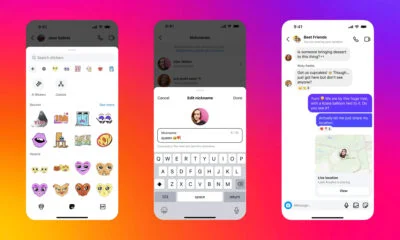News
Data Of 700 Million LinkedIn Users Is For Sale On The Dark Web
Who would pay for this information, you wonder? Spammers, phishers, and other cybercriminals are definitely the target audience here.

The security team at LinkedIn doesn’t get much rest lately. In April, 500 million of its user’s data was exposed by hackers, and the same data collection technique was apparently used by a dark web user called TomLiner, who is currently selling 700 million LinkedIn user records (92% of all LinkedIn users) in a convenient bundle for just $5,000.
The data collection technique in question is called scraping, which is the act of extracting useful information from a website. Since any public website can be scraped using readily available tools, it wouldn’t be correct to call this incident a breach, as LinkedIn quickly pointed out.
“While we’re still investigating this issue, our initial analysis indicates that the dataset includes information scraped from LinkedIn as well as information obtained from other sources,” said Leonna Spilman, Corporate Communications Manager at LinkedIn. “This was not a LinkedIn data breach, and our investigation has determined that no private LinkedIn member data was exposed.”
So, what data has been exposed? Fortunately, no passwords or dates of birth. Here’s what a sample of one million records published by the scrapper contains:
- Email addresses
- Full names
- Phone numbers
- Physical addresses
- Geolocation records
- LinkedIn username and profile URL
- Personal and professional experience/background
- Genders
- Other social media accounts and usernames
Who would pay $5,000 for this information, you wonder? Spammers, phishers, and other cybercriminals are definitely the target audience here.
Also Read: Is Your Phone Hacked? How To Find Out & Protect Yourself
Having all this information in one place makes it much easier for them to create detailed profiles of their potential victims and launch sophisticated targeted attacks against them. Sure, they could simply scape it by themselves using LinkedIn’s own API (application program interface) just like the seller did, but cybercrime can be so profitable that their time is often more valuable.
If you have a LinkedIn account, then you should assume that your personal information is included in the dataset and act accordingly. More specifically, you should enable multi-factor authentication (MFA) and avoid replying to email messages from unknown senders, let alone opening any attachments they may contain.
News
Samsung Smart Glasses Teased For January, Software Reveal Imminent
According to Korean sources, the new wearable will launch alongside the Galaxy S25, with the accompanying software platform unveiled this December.

Samsung appears poised to introduce its highly anticipated smart glasses in January 2025, alongside the launch of the Galaxy S25. According to sources in Korea, the company will first reveal the accompanying software platform later this month.
As per a report from Yonhap News, Samsung’s unveiling strategy for the smart glasses echoes its approach with the Galaxy Ring earlier this year. The January showcase won’t constitute a full product launch but will likely feature teaser visuals at the Galaxy S25 event. A more detailed rollout could follow in subsequent months.
Just in: Samsung is set to unveil a prototype of its augmented reality (AR) glasses, currently in development, during the Galaxy S25 Unpacked event early next year, likely in the form of videos or images.
Additionally, prior to revealing the prototype, Samsung plans to introduce…
— Jukanlosreve (@Jukanlosreve) December 3, 2024
The Galaxy Ring, for example, debuted in January via a short presentation during Samsung’s Unpacked event. The full product unveiling came later at MWC in February, and the final release followed in July. Samsung seems to be adopting a similar phased approach with its smart glasses, which are expected to hit the market in the third quarter of 2025.
A Collaborative Software Effort
Samsung’s partnership with Google has played a key role in developing the smart glasses’ software. This collaboration was first announced in February 2023, with the device set to run on an Android-based platform. In July, the companies reiterated their plans to deliver an extended reality (XR) platform by the end of the year. The software specifics for the XR device are expected to be unveiled before the end of December.
Reports suggest that the smart glasses will resemble Ray-Ban Meta smart glasses in functionality. They won’t include a display but will weigh approximately 50 grams, emphasizing a lightweight, user-friendly design.
Feature Set And Compatibility
The glasses are rumored to integrate Google’s Gemini technology, alongside features like gesture recognition and potential payment capabilities. Samsung aims to create a seamless user experience by integrating the glasses with its broader Galaxy ecosystem, starting with the Galaxy S25, slated for release on January 22.


























